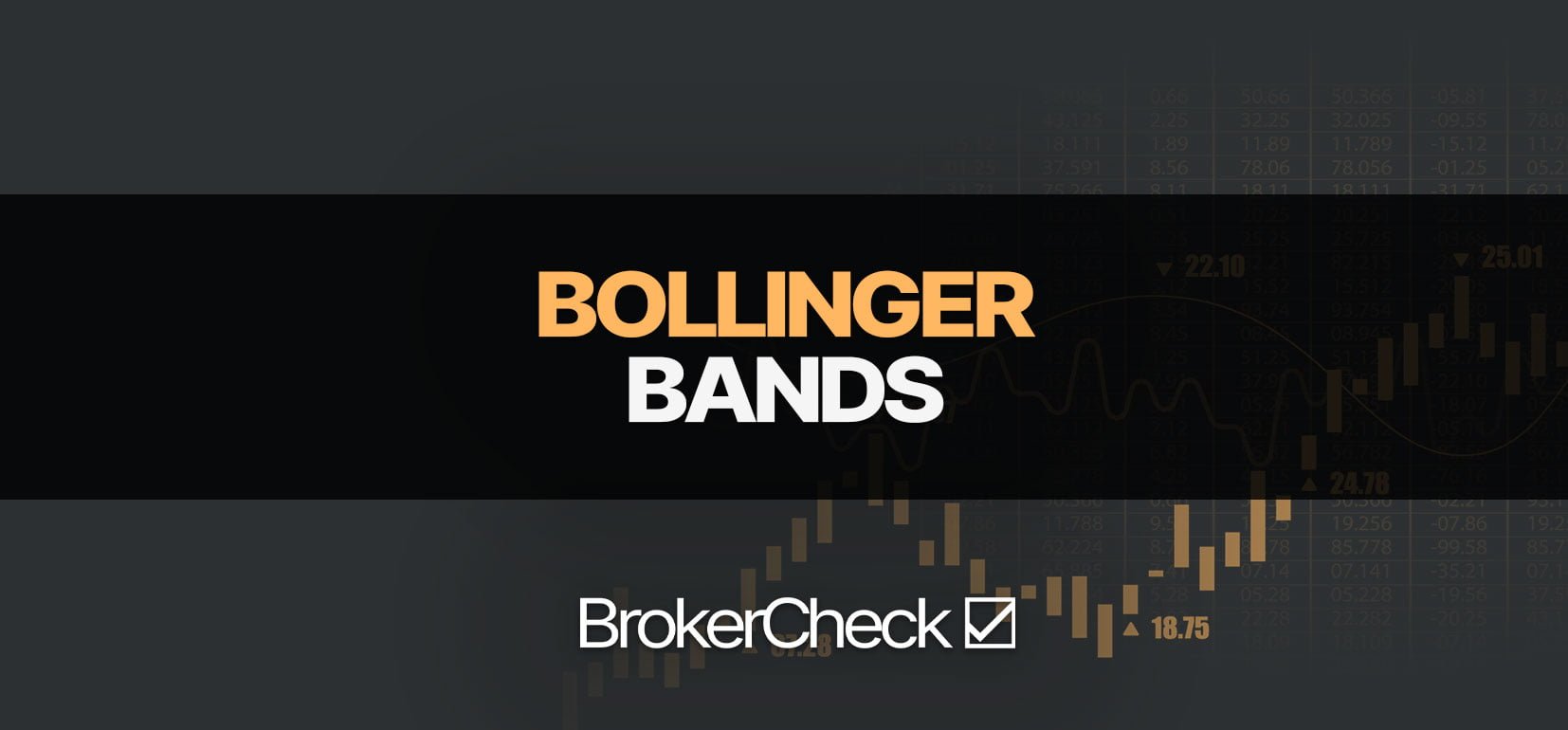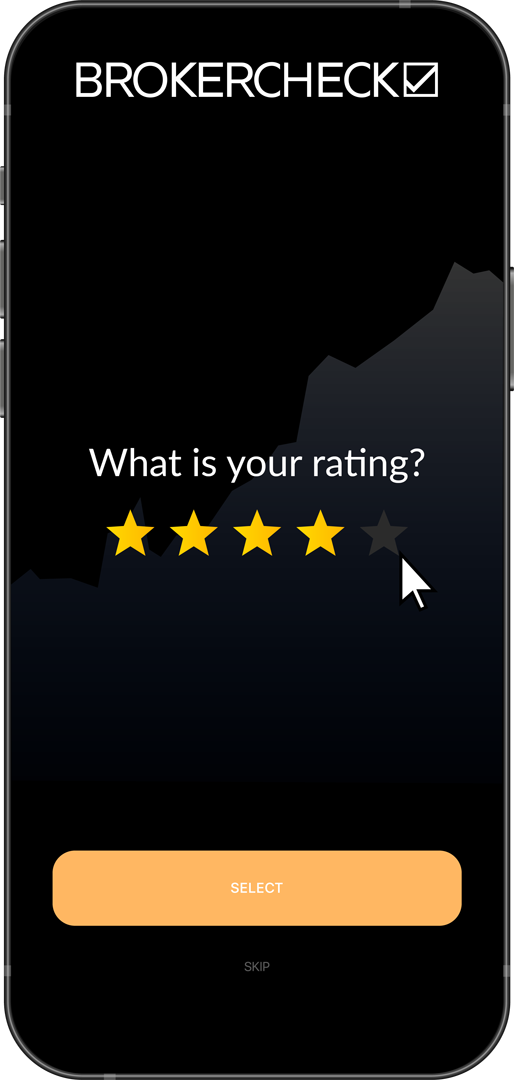1. Understanding Bollinger Bands
In the riveting world of trading, Bollinger Bands stand as a beacon of insight, shedding light on the volatility and price levels of a market. Named after their creator, John Bollinger, these bands are a type of statistical chart characterizing the prices and volatility over time of a financial instrument or commodity.
Bollinger Bands consist of a middle band, which is a simple moving average, typically set at 20 periods. Flanking this middle band are two other bands, the upper and lower Bollinger Bands, which are typically two standard deviations away from the middle band. These bands expand and contract based on the volatility of the market.
When the market becomes more volatile, the bands widen. Conversely, during periods of low volatility, the bands contract. This dynamic nature of Bollinger Bands also allows them to be used on different securities with the standard settings.
For traders, the primary use of Bollinger Bands is to identify periods of high and low volatility for a particular asset. When the bands are wide, the asset is considered volatile. When the bands are narrow, the asset is considered to be in a period of low volatility.
Additionally, Bollinger Bands can signal potential trading opportunities. For instance, when the price of an asset touches or crosses the upper band, it could be a signal that the asset is overbought. Conversely, if the price touches or crosses the lower band, it might indicate that the asset is oversold.
The Bollinger Bands strategy is highly versatile, and traders can customize the periods and standard deviation values based on their trading goals and risk tolerance. However, like any trading tool, it’s essential to use Bollinger Bands in conjunction with other technical analysis tools to increase the probability of accurate predictions.
1.1. Concept and Origin
In the realm of trading, certain names stand tall, their creations forever influencing the landscape of market analysis. Among these, John Bollinger shines brightly. His invention? A potent tool known as Bollinger Bands. As we delve into their concept and origin, we uncover a fascinating blend of ingenuity and mathematical precision.
It was the 1980s, a time of great experimentation and innovation in the financial markets. Bollinger, a long-time market technician, was on a quest to develop a trading tool that could capture the volatility of an equity (stock) or index. His idea was to create a dynamic system that could adapt to changing market conditions, rather than the static calculations used by his contemporaries.
Inspired by the concept of standard deviations and statistical theory, Bollinger devised a unique approach. He decided to plot bands around the moving average of a stock or index, with the width of the bands dynamically adjusting to the market’s volatility. If the market became more volatile, the bands would widen. If volatility decreased, the bands would contract.
This was a revelation. No longer were traders confined to static analysis. They now had a tool that breathed with the market, expanding and contracting in sync with the rhythm of volatility. Bollinger Bands were born.
In essence, Bollinger Bands consist of three lines. The middle line is a simple moving average, typically a 20-day period. The upper and lower bands are calculated based on the standard deviation of the price, which effectively measures the volatility. The default setting is to plot the bands two standard deviations above and below the moving average, encompassing roughly 95% of the price action.
However, the true beauty of Bollinger Bands lies not just in their calculation, but in their application. Traders quickly discovered that these bands could serve as powerful indicators of potential price reversals, entry and exit points, and trend strength. They became an integral part of many trading strategies, forever changing the way traders navigate the market’s turbulent waters.

1.2. Components of Bollinger Bands
Diving into the core of Bollinger Bands, we find three critical components that make it a powerful tool for traders. The first and most central component is the Simple Moving Average (SMA). The SMA, typically set at a 20-day period, forms the backbone of the Bollinger Bands, providing a reference point for the upper and lower bands.
The second component is the Upper Band. This band is computed by adding a specified number of standard deviations to the SMA. The standard deviation measures how widely prices are dispersed from the average, thus the upper band adjusts to market volatility, expanding during volatile markets and contracting in quieter ones.
The third component is the Lower Band, which is calculated by subtracting a specified number of standard deviations from the SMA. Like the upper band, the lower band also responds to market volatility.
- Simple Moving Average (SMA): The middle band and basis for the upper and lower bands.
- Upper Band: Represents overbought territory in the market, calculated by adding a specified number of standard deviations to the SMA.
- Lower Band: Indicates oversold conditions, derived by subtracting a certain number of standard deviations from the SMA.
These three components work in harmony to create the Bollinger Bands. They provide a dynamic picture of potential price volatility, helping traders identify potential buy and sell signals. By understanding these components, traders can better interpret Bollinger Bands and apply them to their trading strategies.
1.3. Significance of Bollinger Bands in Trading
Bollinger Bands, a highly versatile and potent trading tool, have etched an indelible mark in the world of trading. These dynamic lines, which encapsulate the price action, are more than just random curves on your trading screen. They are the visual representations of the market’s volatility and price levels that are statistically too high or too low.
The significance of Bollinger Bands in trading lies in their unique capability to adapt to changing market conditions. Unlike other static trading indicators, Bollinger Bands widen during periods of increased market volatility and contract when the market is quiet. This dynamic nature of Bollinger Bands gives traders a real-time snapshot of the market’s volatility.
The upper and lower bands are also a rich source of potential trading signals. When prices touch or break through the upper band, it might be an indication that the asset is overbought. Conversely, when prices touch or break through the lower band, it could suggest that the asset is oversold. This information can be invaluable in informing your trading decisions, helping you to buy low and sell high.
Moreover, Bollinger Bands can help traders identify price patterns and trends. When the bands tighten, it often precedes a sharp price move. This ‘squeeze’ is a key signal that traders look for, as it can potentially indicate the start of a significant price trend.
In addition, Bollinger Bands can be used in conjunction with other trading indicators to create a comprehensive trading strategy. For instance, a trader might use the Relative Strength Index (RSI) alongside Bollinger Bands to identify overbought or oversold conditions in the market.
In essence, Bollinger Bands offer traders a multifaceted approach to analysing the markets. Whether you’re a novice trader or a seasoned pro, understanding and utilising the Bollinger Bands can give you a significant edge in the competitive world of trading.
2. Bollinger Bands Settings
The heart of any Bollinger Bands strategy lies in the correct setting of the Bollinger Bands parameters. These parameters are not set in stone and can be adjusted to fit the trader’s personal preference or the specifics of the asset being traded.
The first parameter to consider is the period. The period is the number of price bars that the Bollinger Bands calculation is based on. The standard period is 20, which means the bands are calculated based on the last 20 price bars. However, traders can adjust this number based on their trading style and the volatility of the asset. A shorter period will result in bands that are more sensitive to price changes, while a longer period will create smoother bands that are less prone to minor price fluctuations.
The second parameter is the standard deviation. The standard deviation is a statistical measure that shows how much variation or dispersion exists from the average. In the context of Bollinger Bands, it determines the width of the bands. A higher standard deviation will result in wider bands, indicating a higher level of volatility, while a lower standard deviation will create narrower bands, indicating less volatility. The standard setting for this parameter is 2, but again, traders can adjust this to fit their needs.
Finally, the moving average type is another important setting. Bollinger Bands are typically calculated using a simple moving average, but other types can also be used, such as the exponential moving average. The choice of moving average type can have a significant impact on the responsiveness of the bands.
- Period: Number of price bars used in the calculation. Standard setting is 20, but can be adjusted.
- Standard Deviation: Determines the width of the bands. Standard setting is 2, but can be adjusted.
- Moving Average Type: Type of moving average used in the calculation. Typically a simple moving average, but other types can be used.
Remember, the key to successful trading with Bollinger Bands is not just understanding the settings, but also knowing how to interpret the bands and use them in conjunction with other indicators and tools.
2.1. Default Settings
When diving into the world of Bollinger Bands, it’s crucial to understand the default settings that are typically utilized. The standard configuration, used by many traders, consists of a 20-period simple moving average (SMA) with an upper and lower band each set at two standard deviations from the SMA. These parameters are not arbitrary, but rather the result of extensive testing and analysis by John Bollinger himself, the mastermind behind this versatile technical analysis tool.
- 20-Period SMA: The heart of the Bollinger Bands, the 20-period SMA serves as the baseline for the upper and lower bands. It represents the average closing price over the last 20 periods, providing a sense of the ‘middle ground’ in price action.
- 2 Standard Deviations: The upper and lower bands are set at two standard deviations from the SMA. This statistical measure indicates the volatility of price movements, with a higher standard deviation signifying greater volatility. By setting the bands at two standard deviations, approximately 95% of all price action is encapsulated within the bands.
However, these default settings are not set in stone. Traders can adjust them based on their trading style, risk tolerance, and the specific characteristics of the asset they’re trading. For instance, shorter-term traders might prefer a 10-period SMA with 1.5 standard deviations, while longer-term traders might opt for a 50-period SMA with 3 standard deviations.
Remember, the key to successful trading with Bollinger Bands lies in understanding how these settings influence the bands’ behavior and how they can be tweaked to align with your trading strategy. Whether you’re a day trader scouting for quick profits or a swing trader seeking long-term gains, mastering the default settings of Bollinger Bands can unlock a world of trading opportunities.
2.2. Modifying Settings
Modifying the settings of Bollinger Bands can significantly impact your trading strategy, allowing you to better adapt to market conditions and optimize your trades. Let’s dive into the nitty-gritty of tweaking these settings to achieve the best results.
The primary parameters that can be adjusted are the Period and the Standard Deviations. The Period, typically set at 20, represents the number of price bars used to calculate the Bollinger Bands. Increasing the period will make the bands wider, providing a more generalized view of the market volatility, while decreasing it will narrow the bands, offering a more detailed insight into short-term price fluctuations.
The Standard Deviations, usually set at 2, control the width of the bands relative to the moving average. A higher standard deviation will expand the bands, indicating a higher level of volatility, and a lower standard deviation will contract the bands, signaling a lower level of volatility.
- Increasing the Period: This will widen the Bollinger Bands, capturing more significant price movements. It’s beneficial in a trending market as it reduces the number of false signals. However, the downside is that it may delay the identification of a price reversal.
- Decreasing the Period: This will narrow the Bollinger Bands, making them more responsive to minor price changes. It’s useful in a range-bound market where you aim to capitalize on small price swings. But remember, it may produce more false signals.
- Adjusting the Standard Deviations: Altering this setting will affect the sensitivity of the bands to price changes. A higher standard deviation will result in wider bands, useful in highly volatile markets. Conversely, a lower standard deviation results in narrower bands, suitable for markets with low volatility.
Remember, there’s no one-size-fits-all setting. The optimal parameters depend on your trading style, the asset you’re trading, and the market conditions. Experimentation and backtesting are key to finding the settings that work best for you.
2.3. Settings for Different Market Conditions
Like a seasoned sailor adjusting sails to the shifting winds, successful traders know the importance of adapting their strategies to different market conditions. Bollinger Bands, a versatile tool in any trader’s arsenal, can be fine-tuned to deliver optimal results in varying market scenarios.
In a stable, sideways market, the standard setting of 20 periods for the moving average and 2 standard deviations for the band width is often effective. This setting tends to contain price action within the bands, providing clear buy and sell signals when prices touch the lower and upper bands, respectively.
However, in a trending market, price often persistently pushes against one band or the other. In such cases, adjusting the number of periods for the moving average to a shorter timeframe (like 10 periods) can help the bands adapt more quickly to changing trends. Reducing the number of standard deviations to 1.5 can also help contain price action within the bands, providing more reliable signals.
When the market is volatile, expanding the band width to 2.5 or 3 standard deviations can help accommodate the wild swings in price. This wider setting can prevent false signals that might otherwise trigger trades due to the exaggerated price movements.
Remember, these are just starting points. Successful trading with Bollinger Bands requires practice, experimentation, and a keen eye on the market’s mood. It’s all about finding the settings that work best for you in the different market conditions you face. Happy trading!
3. Bollinger Bands Formula
Bollinger Bands are a powerful trading tool, but understanding the formula behind them can truly unlock their potential. At their core, Bollinger Bands consist of three lines – the middle, upper, and lower band. The middle band is a simple moving average, typically calculated over 20 periods. The upper and lower bands are set two standard deviations away from this moving average.
Let’s break down the formula for each band:
- Middle Band: This is calculated as the simple moving average (SMA) of the closing prices over a set number of periods, typically 20. If you’re looking at a daily chart, each period would represent one day.
- Upper Band: The upper band is calculated by adding two standard deviations to the middle band. This measures the volatility of the market – when the market is volatile, the bands widen; when the market is calm, the bands narrow.
- Lower Band: The lower band is calculated by subtracting two standard deviations from the middle band. This also reflects market volatility.
In essence, these bands form a kind of envelope around the price action. When prices touch the upper band, it’s a general signal that the asset may be overbought. Conversely, when prices touch the lower band, it could indicate that the asset is oversold. But remember, like all trading indicators, Bollinger Bands shouldn’t be used in isolation. Always combine them with other indicators or patterns to make more accurate trading decisions.
3.1. Calculation of Middle Band
In the heart of every Bollinger Bands chart, you’ll find the Middle Band. This band is the foundation, the backbone, the keystone upon which the entire Bollinger Bands strategy is built. But how is it calculated? Let’s delve into the mathematics behind this critical component.
The Middle Band, in its most basic form, is a simple moving average. It’s calculated by adding up the closing prices of a set number of periods, and then dividing that total by the number of periods. This gives us an average price over a specific period of time, providing a smooth line that filters out the noise of daily price fluctuations.
For example, if you’re working with a 20-day Middle Band, you’d add up the closing prices for the past 20 days, then divide by 20. Simple, right? But the magic of the Middle Band doesn’t stop there.
Why is the Middle Band so important? It serves as a baseline for both the upper and lower bands, which are calculated using standard deviations from this Middle Band. This means that the Middle Band is not just an average, but the heart of the Bollinger Bands system, pumping out the data that fuels the rest of the strategy.
Understanding the Middle Band calculation is vital for any trader looking to master the Bollinger Bands technique. It’s the starting point that sets the stage for the dramatic interplay of volatility, price action, and market psychology that makes this trading strategy so compelling.
So, the next time you look at a Bollinger Bands chart, remember the humble Middle Band. It may not grab the headlines like its upper and lower counterparts, but it’s quietly doing the heavy lifting, providing the foundation for your trading decisions.
3.2. Calculation of Upper Band
The Upper Band of the Bollinger Bands plays a crucial role in determining potential overbought conditions in the market. This is calculated by adding the standard deviation (multiplied by a factor, typically 2) to the moving average. The standard deviation is a measure of volatility, hence, when the markets become more volatile, the bands widen; and when the markets become less volatile, the bands contract.
To put it into perspective, let’s consider a 20-day moving average. The Upper Band is calculated as the 20-day moving average plus (2 times the 20-day standard deviation of price). This means that if the price deviates drastically from the norm, the upper band will adjust accordingly, thus providing traders with a dynamic resistance level.
However, it’s crucial to remember that the upper band is not a strict “sell” signal. Instead, it serves as an alert for traders to start looking for signs of possible overbought conditions, which could indicate an upcoming price reversal.
The beauty of the Bollinger Bands lies in their adaptability. They adjust according to market conditions, providing traders with a flexible tool that can aid in identifying potential entry and exit points.
Here’s a quick step-by-step guide to calculate the Upper Band:
- Start by calculating the simple moving average (SMA). For example, if you’re using a 20-day Bollinger Band, add up the closing prices of the last 20 days and divide by 20.
- Calculate the standard deviation of the same 20-day period. The standard deviation measures the price volatility, indicating how much the price deviates from the average.
- Finally, multiply the standard deviation by 2 and add the result to the SMA. This gives you the upper band.
Understanding the calculation behind the Bollinger Bands, particularly the Upper Band, can provide an edge in your trading strategy. It’s not just about knowing when to buy or sell, but understanding the market dynamics that influence these decisions.
3.3. Calculation of Lower Band
In the realm of technical analysis, the Lower Band serves as a critical component in the construction of Bollinger Bands. This band acts as a dynamic support level that adjusts according to the market’s volatility. It’s calculated by subtracting two standard deviations from the middle band, which is a simple moving average (SMA).
To illustrate, let’s assume the SMA of a stock over 20 days is $50 and the standard deviation is $5. The lower band would thus be calculated as $50 – (2*$5) = $40. This indicates that if the stock price drops towards $40, it would be hitting the lower band, potentially signaling an oversold condition.
The significance of the lower band is often underscored in a trading strategy. It’s a crucial indicator for traders to identify potential buying opportunities. When prices touch the lower band, it’s often interpreted as the market being oversold, suggesting a potential price rebound.
However, it’s essential to note that the lower band is not a standalone indicator. Traders should use it in conjunction with other tools and market indicators to ensure a comprehensive analysis. The lower band is a piece of the puzzle, helping traders to understand the bigger picture of market conditions.
In the world of trading, understanding the calculation and interpretation of the lower band is a must-have skill. It’s one of the many tools in a trader’s toolkit, providing valuable insights into market volatility and potential price movements. Whether you’re a novice trader or an experienced market player, mastering the lower band calculation can significantly enhance your trading strategy.
4. Bollinger Bands Strategy
The Bollinger Bands Strategy is a powerful tool for traders, providing a roadmap of potential market volatility. This strategy hinges on the understanding of three key components: the upper band, the lower band, and the simple moving average (SMA). At its core, the Bollinger Bands Strategy is about understanding when the market is quiet and when the market is loud.
Understanding the Bands
The upper and lower bands are typically two standard deviations away from the SMA. When the bands are tight, it indicates a quiet market. Conversely, when the bands widen, it signals a loud, or volatile, market. As a trader, it’s essential to understand these dynamics as they can provide insight into potential market shifts.
Using the Strategy
When the price touches the upper band, it could indicate an overbought condition. On the flip side, when the price touches the lower band, it could suggest an oversold condition. However, these are not standalone signals to buy or sell. They should be used in conjunction with other indicators to confirm the market conditions.
Adjusting the Settings
The default setting for Bollinger Bands is a 20-day SMA and two standard deviations. However, these can be adjusted based on your trading style and the asset you’re trading. If you prefer shorter-term trades, consider reducing the number of days in the SMA. If you’re trading a particularly volatile asset, you might want to increase the number of standard deviations.
Interpreting the Bands
One common mistake traders make is assuming the price will automatically reverse when it hits the upper or lower band. This isn’t always the case. The Bollinger Bands Strategy is not a magic formula, but rather a guide to understanding market volatility. It’s important to use it as part of a broader trading strategy, incorporating other technical indicators and fundamental analysis.
A Final Word
The Bollinger Bands Strategy offers an insightful way to gauge market volatility. By understanding the relationship between the upper and lower bands and the SMA, you can make informed trading decisions. However, remember that no single tool or strategy guarantees success. It’s essential to continually learn, adapt, and refine your trading approach.
4.1. Bollinger Bounce
In the bustling world of trading, the Bollinger Bounce is a phenomenon that, like a seasoned dancer, moves with rhythm and predictability. It’s a concept that is as intriguing as its name suggests and is a key element when using Bollinger Bands. The Bollinger Bounce refers to the tendency of prices to bounce between the upper and lower Bollinger Bands.
Understanding the Bollinger Bounce is pivotal for traders who use Bollinger Bands to identify potential buy and sell signals. It’s like understanding the ebb and flow of the ocean – you need to know when the tide comes in (when to buy) and when it recedes (when to sell).
The Bollinger Bounce is based on the principle that price tends to return to the middle of the Bands. Think of it as a rubber band stretched to its limit – eventually, it has to snap back to its original shape. In trading terms, when the price hits the upper Band, it’s considered overbought and likely to fall back to the middle or even the lower Band. Conversely, when the price hits the lower Band, it’s seen as oversold and likely to bounce back up.
Key points to remember about the Bollinger Bounce:
- It is not a standalone indicator: While the Bollinger Bounce can be a useful tool, it should not be used in isolation. It’s best used in conjunction with other indicators to confirm signals and prevent false alarms.
- It is more reliable in a ranging market: The Bollinger Bounce is most effective in a ranging market, where the price is bouncing between a high and a low point. In a trending market, the price can ‘walk’ along the Bands, leading to potential false signals.
- It requires patience: Like any trading strategy, the Bollinger Bounce isn’t about instant gratification. It requires patience to wait for the right conditions and discipline to act when they occur.
In the high-stakes game of trading, the Bollinger Bounce can be a powerful ally. It’s a strategy that, when used wisely, can help traders chart a course through the often choppy waters of the market.
4.2. Bollinger Squeeze
In the world of trading, the Bollinger Squeeze is a sight to behold, a bellwether of impending market volatility. This intriguing phenomenon occurs when the upper and lower Bollinger Bands converge, indicating a period of low volatility. The market, much like a coiled spring, is gathering energy for its next big move.
The key to leveraging the Bollinger Squeeze is understanding its two crucial stages. The first stage is the actual squeeze. Here, traders need to keep their eyes peeled for the narrowing of the Bollinger Bands. This is a signal that the market is in a state of consolidation and a break is imminent. However, the squeeze alone doesn’t provide a clear direction of the forthcoming break.
It’s the second stage, the break, that holds the answer. When the price breaks above or below the Bollinger Bands, it often signals the start of a new trend. A break above may suggest a bullish trend, while a break below could indicate a bearish trend.
However, as with all trading strategies, it’s essential to remember that the Bollinger Squeeze is not foolproof. It is a tool, and like any tool, it is only as effective as the trader using it. Therefore, it’s always advised to use the Bollinger Squeeze in conjunction with other technical indicators to confirm signals and reduce the risk of false breaks.
In the end, the Bollinger Squeeze is one of the most dynamic features of the Bollinger Bands. It’s a testament to the market’s cyclical nature, a reminder that after periods of calm, the storm inevitably follows. By mastering the Bollinger Squeeze, traders can harness the market’s volatility, turning uncertainty into opportunity.
4.3. Bollinger Bands and Other Indicators
Bollinger Bands are not lone wolves in the vast forest of trading indicators. They form a powerful alliance with other indicators to provide traders with a holistic view of market trends and volatility.
Relative Strength Index (RSI), for instance, makes a great companion to Bollinger Bands. When the price touches the upper band and the RSI indicates overbought conditions, a reversal might be imminent. The same applies when the price hits the lower band and the RSI shows oversold conditions.
Stochastic Oscillator is another potential ally. When the market is trending upwards and the price is above the middle band, look for the stochastic to pull back below 20 before considering a long position. Conversely, in a downtrend with the price below the middle band, wait for the stochastic to go above 80 before contemplating a short position.
Moving Average Convergence Divergence (MACD) can also be used in tandem with Bollinger Bands. When the MACD line crosses above the signal line and the price is near the lower Bollinger Band, it could be a good time to buy. If the MACD line crosses below the signal line and the price is near the upper Bollinger Band, it might be a good time to sell.
These are just a few examples of how Bollinger Bands can be combined with other indicators to formulate robust trading strategies. Remember, no single indicator is foolproof. A well-rounded approach that incorporates multiple indicators can provide a more accurate read on market conditions and help you make more informed trading decisions.











